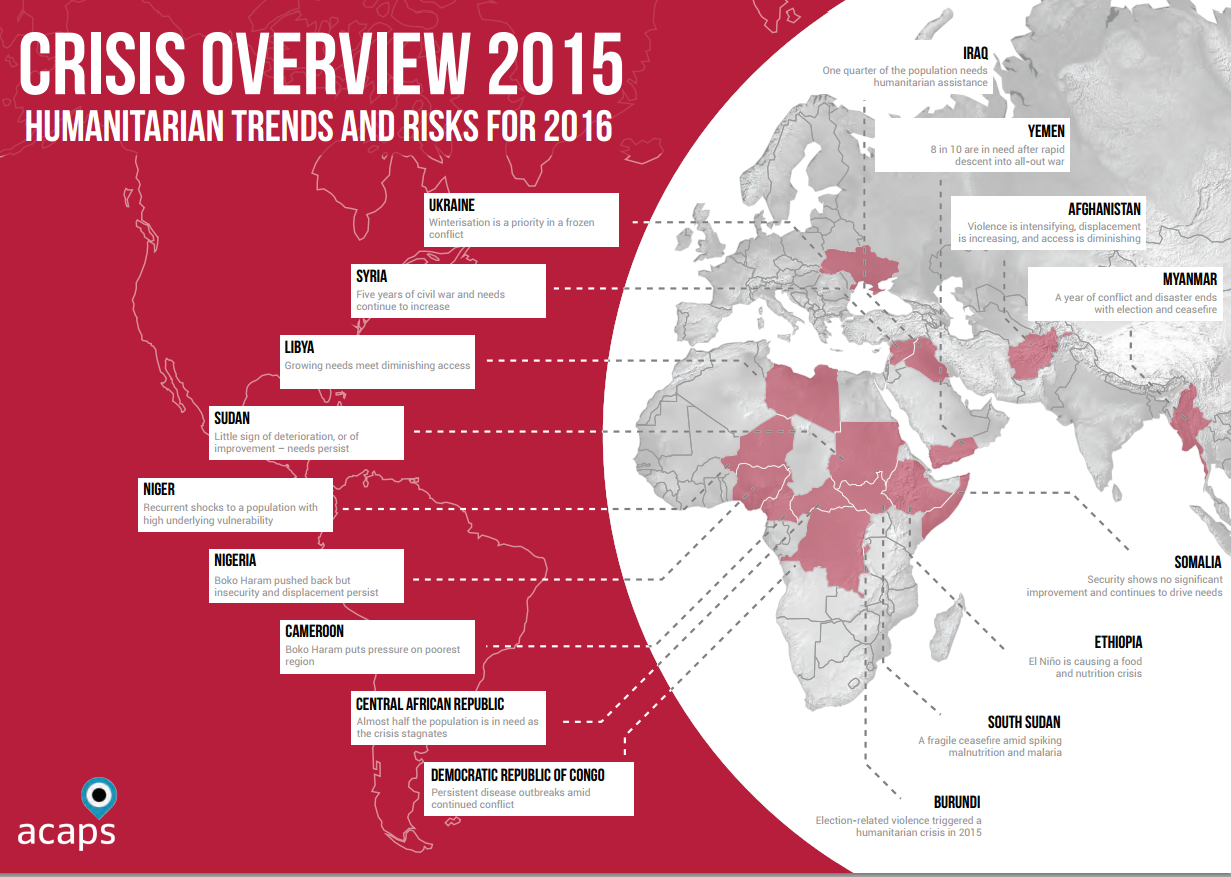Report
Crisis Overview 2015: Humanitarian Trends and Risks for 2016

In 2012 ACAPS launched the Global Emergency Overview (GEO). Since then, we have provided a weekly global overview of humanitarian crises. The Crisis Overview 2015: Humanitarian Trends and Risks for 2016 is the first attempt to use the three years of data we have gathered for the GEO to identify long-term trends in humanitarian needs and build scenarios outlining potential change for countries in crisis in 2016. The aim of the report is to deepen collective understanding of how needs have evolved over time in some of the most severe humanitarian crises in the world. It is our hope that we can contribute towards a more robust shared situation awareness across the humanitarian sector and inspire thinking that will ultimately help to improve support to crisis-affected populations.
Read analysis from the Red Cross/Red Crescent Climate Centre on the effects El Nino had on this report.
Crisis Overview 2015: Humanitarian Trends and Risks for 2016
http://acaps.org/img/documents/a-acaps-crisis-overview-2015-trends-and-risks-2016.pdf
